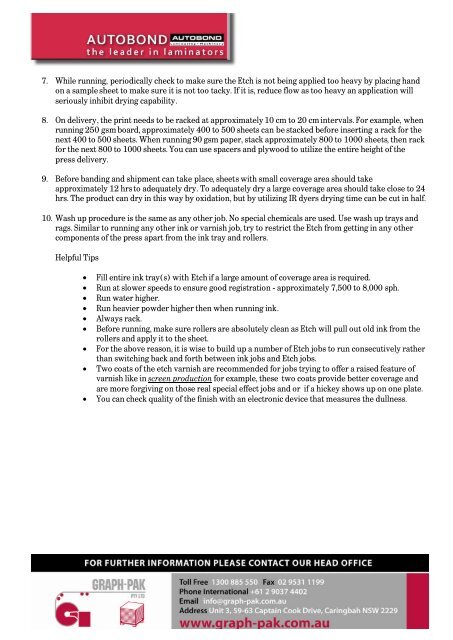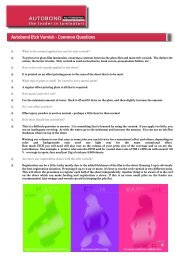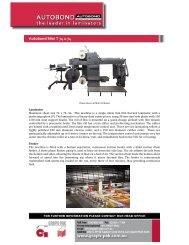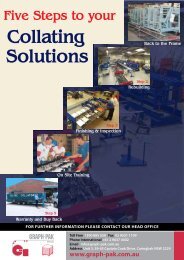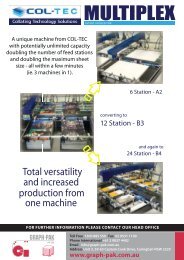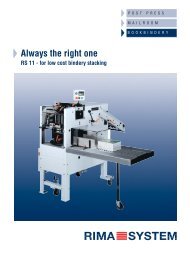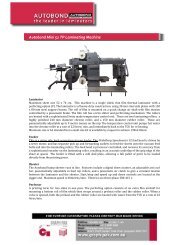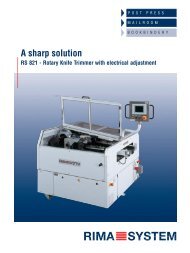Autobond Matt Etch Varnish ~ Recommended Operating Procedures
Autobond Matt Etch Varnish ~ Recommended Operating Procedures
Autobond Matt Etch Varnish ~ Recommended Operating Procedures
Create successful ePaper yourself
Turn your PDF publications into a flip-book with our unique Google optimized e-Paper software.
7. While running, periodically check to make sure the <strong>Etch</strong> is not being applied too heavy by placing hand<br />
on a sample sheet to make sure it is not too tacky. If it is, reduce flow as too heavy an application will<br />
seriously inhibit drying capability.<br />
8. On delivery, the print needs to be racked at approximately 10 cm to 20 cm intervals. For example, when<br />
running 250 gsm board, approximately 400 to 500 sheets can be stacked before inserting a rack for the<br />
next 400 to 500 sheets. When running 90 gsm paper, stack approximately 800 to 1000 sheets, then rack<br />
for the next 800 to 1000 sheets. You can use spacers and plywood to utilize the entire height of the<br />
press delivery.<br />
9. Before banding and shipment can take place, sheets with small coverage area should take<br />
approximately 12 hrs to adequately dry. To adequately dry a large coverage area should take close to 24<br />
hrs. The product can dry in this way by oxidation, but by utilizing IR dyers drying time can be cut in half.<br />
10. Wash up procedure is the same as any other job. No special chemicals are used. Use wash up trays and<br />
rags. Similar to running any other ink or varnish job, try to restrict the <strong>Etch</strong> from getting in any other<br />
components of the press apart from the ink tray and rollers.<br />
Helpful Tips<br />
• Fill entire ink tray(s) with <strong>Etch</strong> if a large amount of coverage area is required.<br />
• Run at slower speeds to ensure good registration - approximately 7,500 to 8,000 sph.<br />
• Run water higher.<br />
• Run heavier powder higher then when running ink.<br />
• Always rack.<br />
• Before running, make sure rollers are absolutely clean as <strong>Etch</strong> will pull out old ink from the<br />
rollers and apply it to the sheet.<br />
• For the above reason, it is wise to build up a number of <strong>Etch</strong> jobs to run consecutively rather<br />
than switching back and forth between ink jobs and <strong>Etch</strong> jobs.<br />
• Two coats of the etch varnish are recommended for jobs trying to offer a raised feature of<br />
varnish like in screen production for example, these two coats provide better coverage and<br />
are more forgiving on those real special effect jobs and or if a hickey shows up on one plate.<br />
• You can check quality of the finish with an electronic device that measures the dullness.


